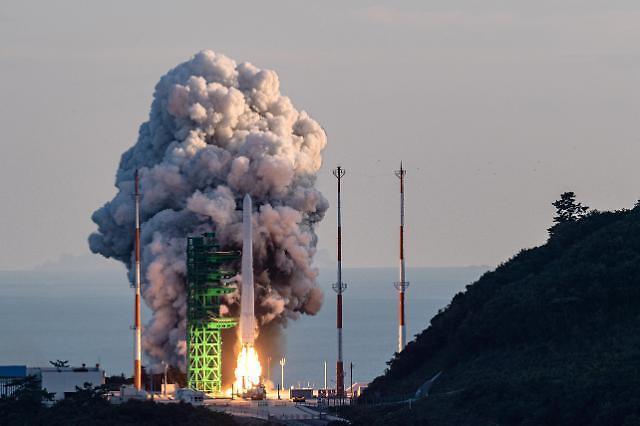[Yonhap Photo]
The development of a hybrid rocket motor that uses one propellant in solid form and the other in liquid form was proposed at a high-level defense technology committee chaired by Defense Minister Suh Wook on February 22 that drew vice-ministerial level government officials and representatives from major government-funded research institutes, and private experts.
There was no mention of the type of a hybrid engine to be developed, but the committee meeting decided to accelerate cooperation between two main stage-run developers -- the Agency for Defense Development (ADD) and the Korea Aerospace Research Institute (KARI). The hybrid system can help South Korea secure technology that can put multiple satellites into different orbits with one launch vehicle.
Liquid-propellant rockets offer more efficient and controllable alternatives, but solid rockets are used in military armament or as light launch vehicles because of their simplicity and reliability. Rockets using solid fuel are more economical to place small satellites weighing less than 500 kilograms in low orbit. The defense ministry said that ADD disclosed technologies related to space launch vehicles. In March, a solid propulsion engine will be tested.
The Defense Acquisition Program Administration (DAPA) has disclosed a project to establish a fleet of ultra-small spy satellites that would be used to quickly detect asymmetric threats from North Korea's nuclear weapons and missiles. The combination of a military reconnaissance satellite and ultra-small spy satellites would help South Korea enhance its early warning capabilities and quickly monitor signs of provocations.
South Korea's science ministry has disclosed a project to develop a 100-ton-class liquid-propellant rocket engine to send a probe to the moon. The first South Korean projectile KSLV-2, also known as Nuri, launched in October 2021, used a 75-ton-class liquid-propellant engine. Although Nuri succeeded in reaching its target altitude, it has failed to release a dummy satellite into orbit. An improved engine should be developed to successfully carry out space missions.





